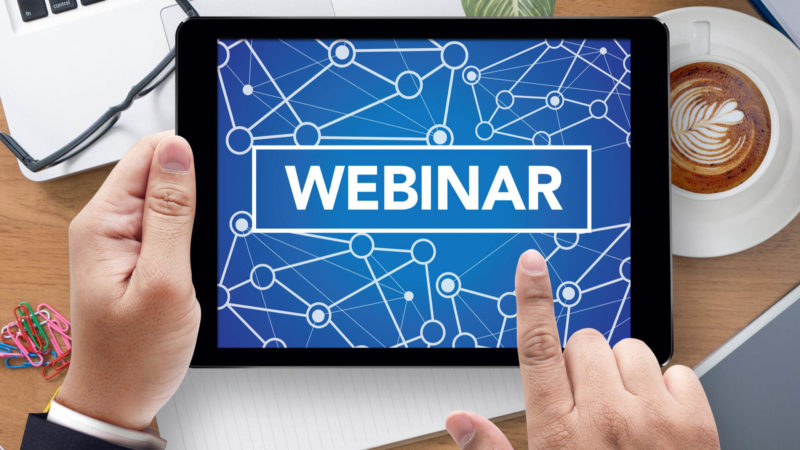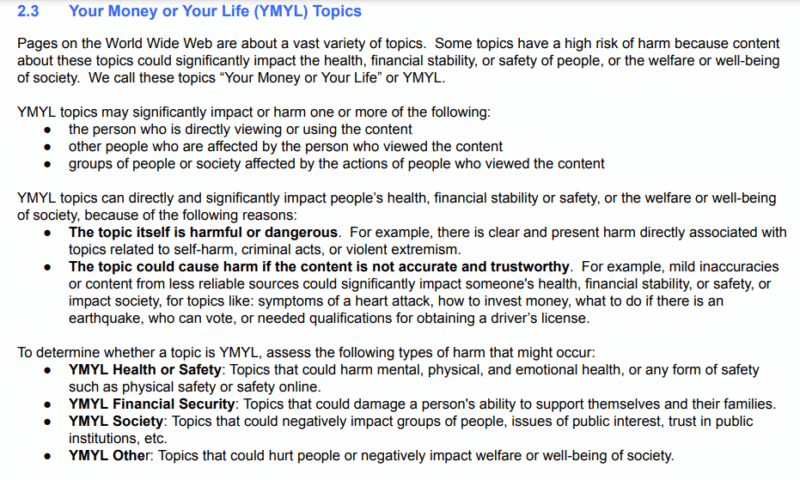B2B marketers tend to be excluded from most articles, case studies and examples. Even when we get mentioned, our marketing efforts are bucketed as “B2B” and not industry-specific.
However, there are many sub-categories of B2B marketing (e.g., SaaS, ecommerce, education, healthcare).
After working with hundreds of B2B accounts, I’ve found there are multiple factors that people tend to overlook or don’t even consider using because it is not “B2B” specific.
That’s a costly mistake.
This article will cover basic challenges when using Google Ads for B2B marketing, as well as more advanced obstacles. The advanced challenges are not necessarily difficult, but they will require time and some planning to overcome.
No ad schedule
Businesses won’t search for your website on just any day or at any time. If you are helping a business that has never used Google Ads before, you should turn to Google Analytics.
Within Google Analytics, you can understand exactly when prospects are engaging with your business, and get clarity into whether those prospects are passively researching your business or actively filling out forms.
A key part of creating an ad schedule is also considering what you want to promote during a given timeframe. If your landing page tells visitors they can request live customer support but your team is not able to help at 3 a.m., you shouldn’t be advertising that specific page during that time frame.
Common sense is also beneficial when setting your ad schedule.
For example, if you repair kitchen equipment for restaurants, you need to consider your customer’s schedules. Their busiest times (and when they will need an urgent response) will depend on their restaurant type. High-end dining will need help at night and over the weekend, and the busiest time for a cafe will be in the morning.
Thinking about small, yet critical insights like this can also open a window for ad scheduling testing and for bid adjustments
Losing control of where your ads are showing
Plenty of B2B companies operate in sensitive or highly regulated verticals. Hence, keeping tabs on where your ad is showing is critical for any marketer that works in these verticals.
Showing your search ads on the display network or in the search partner network are two things you don’t want to do if you would like to protect your brand and avoid wasting valuable ad dollars.
With search ads, you can use keywords to predict a user’s search intent.
But display ads use audience targeting for increased awareness. Therefore, creating search campaigns with “display select” turned on is a quick way to lose visibility into where your ads are showing.
On the other hand, we have search partners. Your ad is shown on pages you can’t track, you can’t adjust bids and you can’t pause placements you don’t like.
So, why use them?
For B2B specifically, you might get a few leads here and there, yet close to zero of those leads will become MQLs or SQLs.
Still using Single Keyword Ad Groups (SKAGs)
SKAGs were probably one of the most amazing tactics B2B marketers had 10 years ago. However, they are no longer a tactic worth implementing.
Let’s do a quick recap of what they are and why they were so popular.
Back in the day, you would create an ad group with one keyword, and that keyword had to be present on your ad copy and your landing page. This meant that all messaging was exactly the same between your keywords, ad and landing page. Keeping that messaging consistent meant your quality score would be higher as well.
When Google Ads expanded match types to include close variants, keywords with the same meaning, the whole shebang, this tactic lost a lot of power. Now, there’s no way to guarantee that all your messaging will align, you will end up competing with yourself.
Not only that, but as marketers, we have evolved to understand we need to focus on intent and quality of the overall experience instead of just trying to match keywords to landing pages.
Ad group management
When looking at Google’s definition of an ad group, they state “use ad groups to organize your ads by a common theme.”
An extremely common B2B challenge is that marketers struggle to choose which landing page is best for a given keyword. So, they try to match existing landing pages to a group of keywords that seem similar!
What they end up with are ad groups that have a demo, a trial, a whitepaper download and a blog post. That’s not ideal.
Instead, they need to separate keywords (and landing pages) based on a searcher’s intent, journey phase, etc.
Going back to PPC 101, Google tends to show ads with the most engagement. Now, naturally fewer people are willing to click an ad that says “contact us for a demo,” and more people will be willing to click an ad that says “read our latest blog post.” By default, you are burying your bottom-of-the-funnel pages.
In today’s world, if the intent of two keywords is different, you will need two different landing pages. And since these two keywords don’t share a common theme, you will also need two ad groups.
If you have ever tried to find a built-in audience segment for your B2B business, you know that odd stuff comes up.
For example: When I worked with an advocacy software company, Google said their top in-market audience was “High Performance and Aftermarket Auto Parts.”
Say what?!
Thankfully, you don’t need to rely on built-in segments. If you have access to Google Analytics, navigate to the demographic and interests report. From there you can see the in-market and affiliate segments associated with the traffic from all channels that are currently landing on your website.
By using segments and filters, you can identify audiences that are high-performing or low-performing statistically speaking.
While I don’t recommend you only target or exclude these audiences, this analysis can help you make positive or negative bid adjustments based on performance!
The other great thing about these audiences is that you can (and you should) layer them into your search and display efforts. And remember, you can adjust your bids based on how well these audiences perform.
Don’t get rid of a low-performing audience entirely – just bid lower until you reach a happy equilibrium. At the same time, don’t be afraid to bid up on audiences that drive more than their fair share of high-quality traffic.
The typical B2B buyers’ journey includes multiple touch points and stakeholders before they make a decision. That means it isn’t enough to know how many clicks and leads you are getting in a month. You need to know who is interacting with certain touchpoints.
All major marketing automation platforms (e.g., Marketo, Pardot, HubSpot) have direct integrations with Google Ads. The integration process for each platform is different, but generally speaking, you’ll be able to make this connection by going into the platform’s settings. In Marketo, it is under LaunchPoint. In HubSpot, it is under Marketing and then Ads, and in Pardot, it is under “connector.”
Once you have found those areas, you will need to click create a new connection with Google Ads, then log in to your Google Ads account. Boom! Those platforms will be connected.
Going through this easy process will allow you to have better attribution on your marketing platform and see which specific ads, keywords and so on, are driving qualified leads. You can also create audiences and exclusions. The sky’s the limit!
Enhanced Conversions for increased visibility
Google Ads introduced enhanced conversions in May 2021. This is a fantastic tool for B2B marketers.
It starts with Google collecting key information about a user who submits a form on your website. Then, after they become a customer, you can upload this data into your Google Ads account and obtain insights into which ad they clicked before becoming a customer.
The downside of using enhanced conversions is that you need to have your conversions set up using Google Ads conversion tracking. If you are importing leads from Google Analytics to Google Ads, you won’t be able to use this feature.
Setting up enhanced conversions can be complicated, however. Here’s a great video guide about enhanced conversions from the Paid Media Pros.
A lot of B2B marketers don’t even know about this awesome, recently launched feature. You should definitely give it a shot, especially if you don’t have access to a marketing automation platform or CRM.
Your ads look boring: Ad customizers are here to help!
If you are a B2C or DTC marketer, you are familiar with the ins and outs of ad customizers. However, the amount of B2B marketers using them is super tiny. This is a shame – they are incredibly helpful and so easy to set up.
Ad customizers allow you to personalize your ad copy based on a user’s location, the product they are searching for, and so much more.
To get started, simply upload a data file with all your customizers. If you don’t know how to do that, Google Ads has a downloadable template in the UI platform you can use. From there, create your ads and let Google do its magic.
It’s no surprise B2B marketers don’t gravitate toward ad customizers. If you look at the examples on the Google Ads support page, you will see those are all B2C products. That doesn’t mean B2B marketers shouldn’t use them, however.
For example, if you have cities or states where your business has a local presence, make sure to incorporate that into your ad customizer. If you don’t have a local presence in a given area, just use your default message.
Here’s another example of how B2B marketers can use ad customizers: Discounts! If you have a discount that changes depending on your product and you don’t want to create multiple ad groups and ads to promote the correct discount, ad customizers can totally help you scale these campaigns while ensuring your account is easy to manage.
It’s sad but true: Many ad platforms were not made with the challenges of B2B top of mind.
However, that doesn’t mean that B2B marketers can’t be just as successful as B2C marketers on platforms like Google Ads.
You just need to be creative and think outside the box.
Watch: Google Ads for B2B – Avoiding common mistakes and overcoming platform limitations
Below is the complete video of my SMX Advanced presentation.
The post Google Ads for B2B: How to overcome challenges, platform limitations appeared first on Search Engine Land.
from Search Engine Land https://ift.tt/cHUAlBI
via
IFTTT









 for Voice of the Customer, take you from data, to insight, to action by helping you understand your customer, see who they really are, and better respond to their needs.
for Voice of the Customer, take you from data, to insight, to action by helping you understand your customer, see who they really are, and better respond to their needs.



